Look, I'll be honest – I was skeptical about electric motorcycles at first. Coming from gas bikes, the whole idea seemed like a compromise. But after riding them for the past few years, I'm genuinely impressed by how far they've come. We're not talking about glorified scooters anymore – these are serious machines that'll pin you to the seat with instant torque and cruise whisper-quiet down the highway.
That said, I've made plenty of rookie mistakes along the way (like that time I got stranded with 5% battery because I didn't understand how highway speeds drain the battery). After months of research, test rides, and a few embarrassing charging station adventures, I've put together this guide to help you avoid my mistakes and find the right electric bike for your needs.
Table of Contents
-
What I Wish Someone Had Told Me Before Buying
Range Reality Check (Spoiler: It's Complicated)
Charging Infrastructure Truth Bomb
Performance Expectations vs Reality
Build Quality Red Flags to Watch For
The Real Cost of Ownership
Service Nightmares and How to Avoid Them
-
My Top 25 Picks by What You Actually Need
Daily Commuter Heroes (5 models)
Weekend Warrior Tourers (5 models)
Speed Demon Sport Bikes (5 models)
Adventure Trail Machines (5 models)
Show-Off Luxury Rides (4 models)
Tight Budget Options (1 model)
-
The Good, The Bad, and The 'Why Didn't I Know That?'
Range Reality vs Marketing Claims
Charging Station Roulette
Performance Quirks You Need to Know
Build Quality Truth Bombs
Money Talk: What You'll Really Spend
Service Support Reality Check
Protecting Your Phone (Because You'll Need It More Than You Think)
TL;DR
Here's what I've learned the hard way:
Expect 40-50% less range on the highway than advertised – learned this during a cold snap when my 90-mile range became 60 miles
DC fast charging is the difference between "touring capable" and "city prisoner" – trust me on this
Zero Motorcycles has the most reliable dealer network, which matters when things go wrong
Premium bikes like the Lightning LS-218 cost supercar money but deliver bragging rights
Sur Ron Light Bee X is the best way to dip your toes in electric without going broke
Yeah, they cost more upfront, but I actually save about $1,500 a year on gas and maintenance
Good luck finding service outside major cities for some of these brands
What I Wish Someone Had Told Me Before Buying
Before we dive into specific bikes, let me share the six things that'll make or break your electric motorcycle experience. These are the lessons I learned through trial, error, and a few face-palm moments.
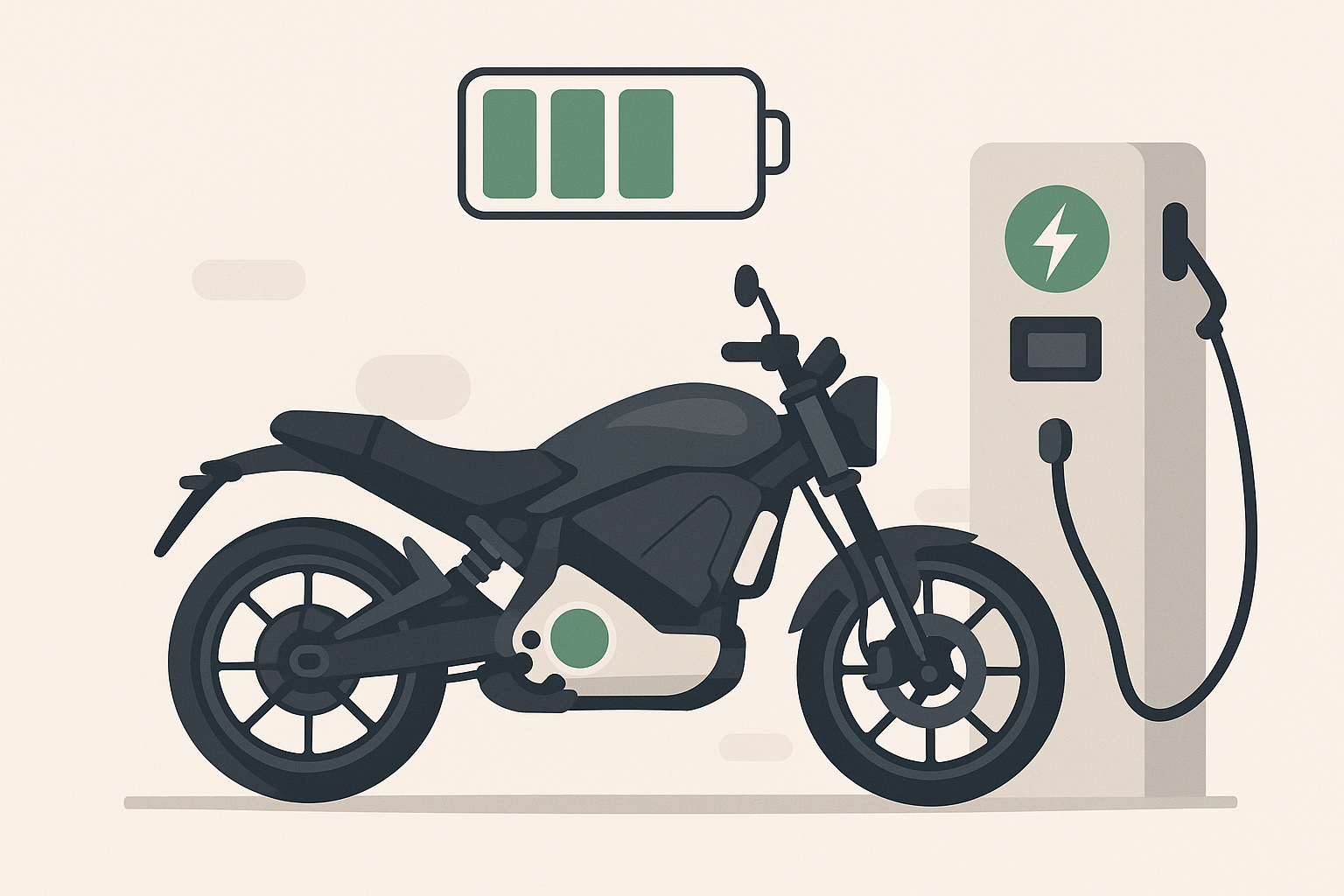
Range Reality Check (Spoiler: It's Complicated)
Here's what nobody tells you about range: those manufacturer numbers are basically fantasy. Your riding style, the weather, how much gear you're carrying, and whether you're doing city or highway riding all mess with how far you'll actually go.
City riding gives you the best range because of regenerative braking (the bike charges itself a bit when you brake – pretty cool). But hit the highway and that battery drains way faster than you'd expect. I made the rookie mistake of planning a highway trip based on city range numbers. What should have been a 2-hour ride turned into a 4-hour adventure with an unplanned charging stop.
Here's the reality: if a bike claims 100 miles of range, expect maybe 50-60 miles of highway riding. Winter? Forget about it – your range drops like a rock. I learned this during a cold snap when my usual 90-mile range became 60 miles. Fun times.
Battery replacement is something dealers won't mention upfront. That $15,000 battery won't last forever – most lose about 20% capacity after 1,000 charge cycles. Yeah, that's basically the cost of another motorcycle down the road.
Take my neighbor Sarah – she commutes 25 miles each way on her Zero FXS. Most days it's perfect, but she's had a few "oh crap" moments when she forgot to charge overnight and had to take the car to work. The 91-mile city range sounds comfortable for her 50-mile round trip, but real life happens.
When planning longer trips, having reliable motorcycle mount charging solutions becomes essential since you'll be constantly checking battery levels and hunting for charging stations.
Charging Infrastructure Truth Bomb
You've got three charging options: plug into a regular wall outlet (takes forever), use a 240V outlet like your dryer uses (faster), or find a DC fast charger (if your bike supports it and if you can find one that works).
Level 1 charging from a regular outlet takes 8-12 hours. Level 2 from a 240V outlet cuts that to 3-6 hours. DC fast charging can get you to 80% in 30-60 minutes, but here's the catch – not all bikes support it, and finding a working station at 8 PM on a Sunday in a small town? Good luck with that.
Charging Level |
What You Need |
How Long |
Reality Check |
|---|---|---|---|
Level 1 |
Regular wall outlet |
8-12 hours |
Works anywhere, perfect for overnight |
Level 2 |
240V outlet (like a dryer) |
3-6 hours |
Need to install one at home |
DC Fast Charging |
Special stations |
30-60 minutes |
If you can find one that works |
I sound like a broken record talking about charging infrastructure, but trust me – you'll become obsessed with it too once you're stranded with 5% battery. Do yourself a favor and really think about where you'll charge day-to-day before you buy.
Performance Expectations vs Reality
Electric bikes deliver all their torque instantly, which feels incredible but takes getting used to. I remember my first ride – the immediate response caught me completely off guard. It's like someone flipped a switch from zero to "holy crap."
But here's the thing: they feel different from gas bikes. No clutch work, no shifting, no engine braking in the traditional sense. Some people love it, others miss the mechanical connection. The instant power is addictive in city traffic where gas bikes struggle with clutch work and heat, but highway cruising feels different without engine character.
Pro tip from someone who learned the hard way: "estimated range" is about as accurate as your GPS saying you'll arrive in 20 minutes during rush hour. Plan accordingly.
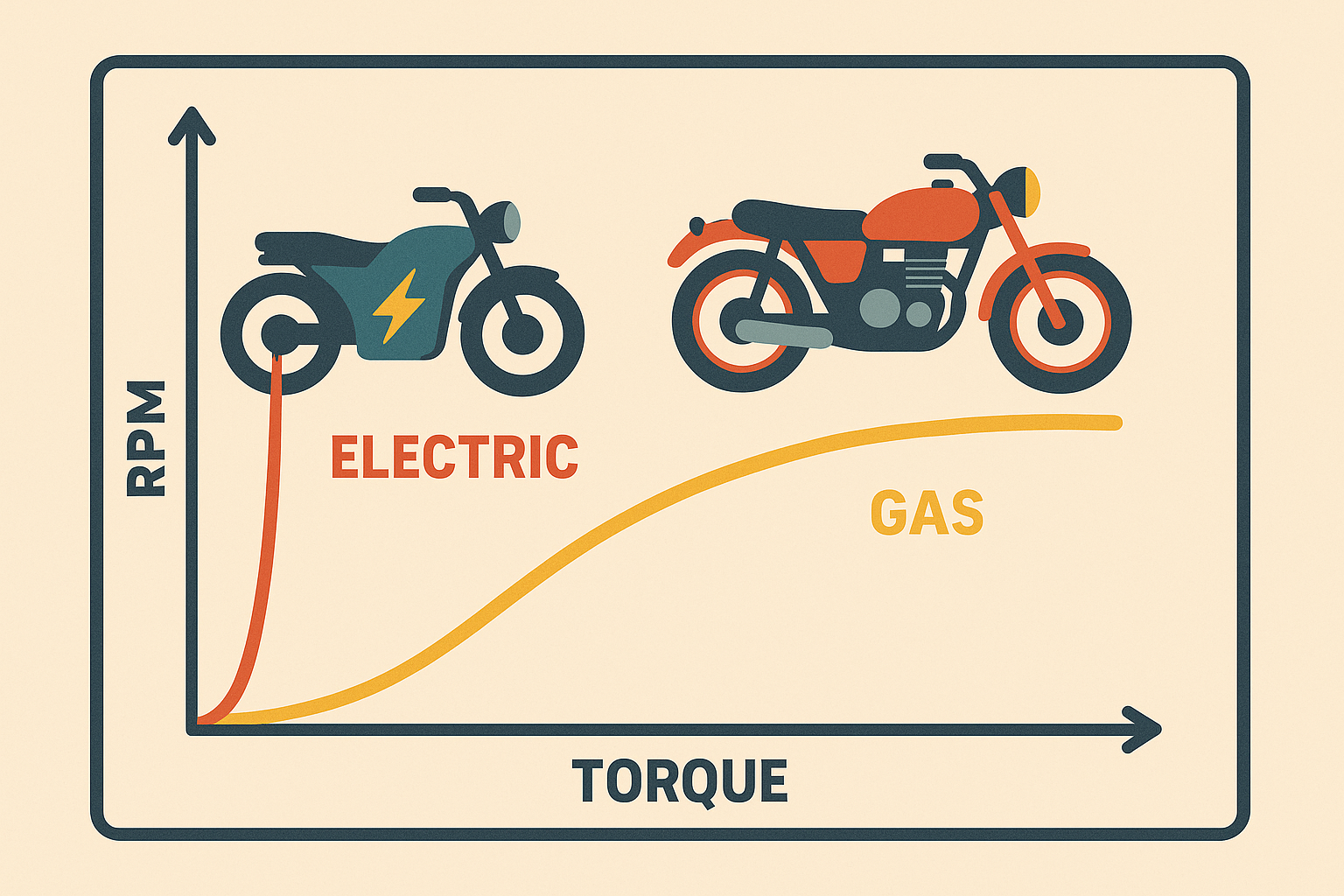
Build Quality Red Flags to Watch For
Established manufacturers like BMW, Harley, and Zero generally know what they're doing. They've been building motorcycles for decades and understand things like weather sealing and component durability.
Startup companies push cool technology but sometimes miss basic motorcycle stuff. I've seen beautiful bikes with questionable weather resistance or weird ergonomics that look great in photos but suck to ride.
Here's something weird nobody mentions – electric bikes are almost too quiet. I've had pedestrians walk right into my path because they literally didn't hear me coming. Some bikes add artificial sound, others leave you playing ninja on the streets.
The Real Cost of Ownership
The sticker shock is real – these bikes aren't cheap, and when I tell my gas-bike buddies what I paid, they think I'm crazy. But here's the math that actually matters:
A decent electric bike costs $15,000-25,000. Yeah, that's pricey. But I save roughly $1,500 a year on gas and maintenance. No oil changes, no spark plugs, no air filters, no complex engine work. Brake pads last longer because of regenerative braking.
My buddy Jake bought a Zero thinking he'd save money. Six months later, he's still trying to convince his wife it was worth the extra $8,000 over a used Honda. The math works out over time, but that upfront cost hurts.
Electricity costs vary, but I spend about $0.50-2.00 per 100 miles compared to $8-15 for gas bikes. Many areas offer rebates too – I got $2,500 back on my federal taxes.
Service Nightmares and How to Avoid Them
This is huge and nobody talks about it enough. Zero has the best dealer network in North America. Harley and BMW use their existing dealers, though not every mechanic knows electric systems yet.
Startup companies? Good luck finding someone to work on your bike outside major cities. I've encountered shops that were scared to touch electric bikes simply because they didn't understand them.
Software updates are becoming a thing too. Some bikes get over-the-air updates, others need dealer visits. It's like having a smartphone with wheels.
My Top 25 Picks by What You Actually Need
I've organized these 25 bikes by what you actually want to do with them, not just price ranges. Each category serves real riding needs, and I'll tell you which ones I'd actually spend my money on.
Daily Commuter Heroes
For city riding, you want something light, efficient, and reliable. These bikes excel in stop-and-go traffic and won't break the bank (well, most of them).
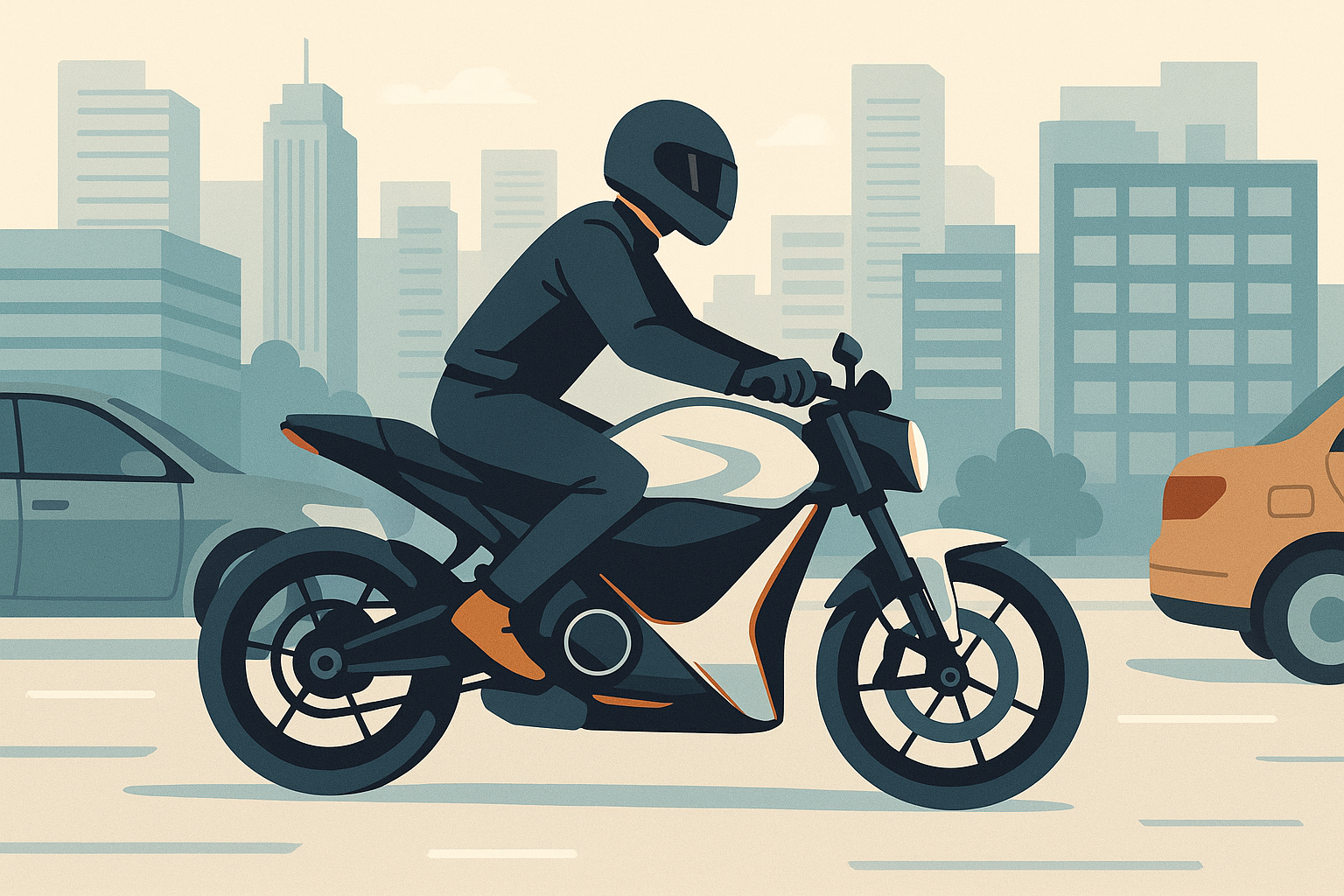
1. Zero FXS (7.2 kWh)
This is Zero's supermoto-styled commuter that hits the sweet spot. At 289 lbs, it's manageable for new riders but delivers 91 miles of city range. The removable battery is genius if you live in an apartment – just carry it inside to charge.
$11,995 gets you 85 mph top speed and enough torque to embarrass cars at stoplights. Zero's been doing this longer than most, so finding service won't be a nightmare. If I needed a daily commuter, this would be high on my list.
2. Cake Kalk OR
Swedish engineering meets minimalist design. At just 152 lbs, this thing is almost bicycle-light, making it incredibly easy to maneuver in tight city spaces. The 53-mile range works for shorter commutes.
At $13,000, you're paying for that distinctive Scandinavian design and conversation starter factor. The 56 mph top speed keeps you legal while the unique styling turns heads everywhere. I've never ridden anything quite like it – the minimalist approach is refreshing but definitely not for everyone.
3. Sur Ron Light Bee X
The bargain hero at $4,500. This dual-sport bike offers 40-60 miles of range with 47 mph top speed in street-legal form. Chinese manufacturing keeps costs reasonable while the modular design lets you customize everything.
For the price, you really can't complain. It's not fancy, but it'll teach you if electric is right for you without breaking the bank. The versatility is nice too – you can hit trails on weekends.
4. NIU NGT
Retro styling meets modern tech. Those removable batteries are super convenient for apartment charging, and the smart features actually work (unlike some bikes where they're just marketing fluff). 93-mile city range handles longer commutes.
$6,999 gets you classic motorcycle looks with 65 mph capability. The traditional styling appeals to riders who want normal-looking bikes with electric guts. Good value proposition overall.
5. Kollter ES1 Pro
Classic motorcycle styling at $7,999. The 59-mile city range and 65 mph top speed cover basic commuting needs. Decent build quality and familiar ergonomics make the transition from gas bikes easier.
Nothing fancy here, just solid transportation that looks like a regular motorcycle. Sometimes that's exactly what you want.
For anyone making the switch to electric commuting, a quality motorcycle handlebar mount is essential since you'll be constantly checking battery levels and finding charging stations.
Weekend Warrior Tourers
Long-distance electric riding needs serious battery capacity and fast charging. These bikes balance range with comfort for actual touring, not just marketing claims.
6. Zero SR/S Premium (14.4 kWh)
Zero's flagship touring machine with 161 miles of city range. The full fairing and premium components justify the $20,995 price. Highway range drops to 82 miles, but the optional rapid charger gets you back on the road in under an hour.
This is the bike that convinced me electric touring was actually viable. The aerodynamic fairing makes a huge difference at highway speeds. If it were my money for serious touring, this would be the choice.
7. Energica Eva Ribelle RS
Italian craftsmanship meets serious touring capability. 143-mile combined range and 125 mph top speed suit weekend warriors. The CCS fast charging works with automotive charging networks, which is huge for longer trips.
$25,000 gets you race-derived technology and genuinely impressive build quality. You can feel the Italian attention to detail everywhere. The broader charging infrastructure access makes this viable for real touring.

8. Harley-Davidson LiveWire S2 Del Mar
Harley's take on electric touring at $17,699. The 84-mile city/55-mile highway range suits regional trips. You get Harley's premium feel with their established dealer network.
It's interesting seeing how Harley adapted their brand to electric power. The distinctive electric motor sound maintains some character while the dealer network provides real service support.
9. BMW CE 04
German engineering in a futuristic package. $11,795 gets you excellent weather protection and BMW build quality. The 81-mile city range and 75 mph top speed work for urban touring.
You either love or hate the styling – there's no middle ground. But the practical features and weather protection excel for year-round riding, and BMW's dealer network is solid.
10. Zero SR/F Premium (14.4 kWh)
Naked bike version of the SR/S with identical performance. $21,995 gets you 161 miles city/82 miles highway range with upright ergonomics. Same touring capability, different style preference.
If you prefer naked bike aesthetics over full fairings, this delivers identical capability with different looks. Zero really knows their electric motorcycle game.
Speed Demon Sport Bikes
High-performance electric bikes that'll embarrass superbikes off the line. The instant torque delivery will absolutely blow your mind if you're coming from gas sport bikes.
11. Energica Ego+ RS
Race-bred performance with 145 hp and MotoE technology. $26,000 gets you 150 mph capability and 143 miles combined range. Multiple riding modes and advanced electronics keep the power manageable.
Real-world range varies dramatically – expect 80-90 miles in sport mode. The MotoE racing technology trickle-down is genuinely impressive. This is serious superbike performance in electric form.
12. Lightning LS-218
The land speed record holder at 218 mph. $38,888 buys you carbon fiber construction and track-focused design. Range exceeds 150 miles in normal riding.
Limited production makes this exclusive. The carbon monocoque chassis and premium components justify the price for serious performance enthusiasts. More statement piece than practical motorcycle.
13. Damon Hypersport Premier
Advanced safety systems and 200+ mile range set this apart. $40,000 includes 360-degree awareness systems and adaptive ergonomics. Top speed hits 200 mph with cutting-edge tech.
The adaptive systems and collision warnings are fascinating, but I'd want more real-world testing before spending this kind of money. Limited service network reflects the startup nature.
14. Arc Vector
The Bugatti of electric motorcycles at $90,000. Carbon fiber monocoque construction with no expense spared. 170+ mile range and 150 mph top speed with exclusive ownership experience.
This represents the pinnacle of electric motorcycle engineering. Limited production creates exclusivity, but you're paying supercar money for motorcycle performance.
15. Zero SR (14.4 kWh)
Proven naked sport platform with 171 miles city range and 102 mph top speed. $19,995 offers excellent value for serious performance with Zero's reliable support network.
The SR provides Zero's sport bike foundation with established dealer support. Naked styling suits aggressive street riding while maintaining Zero's proven reliability record.
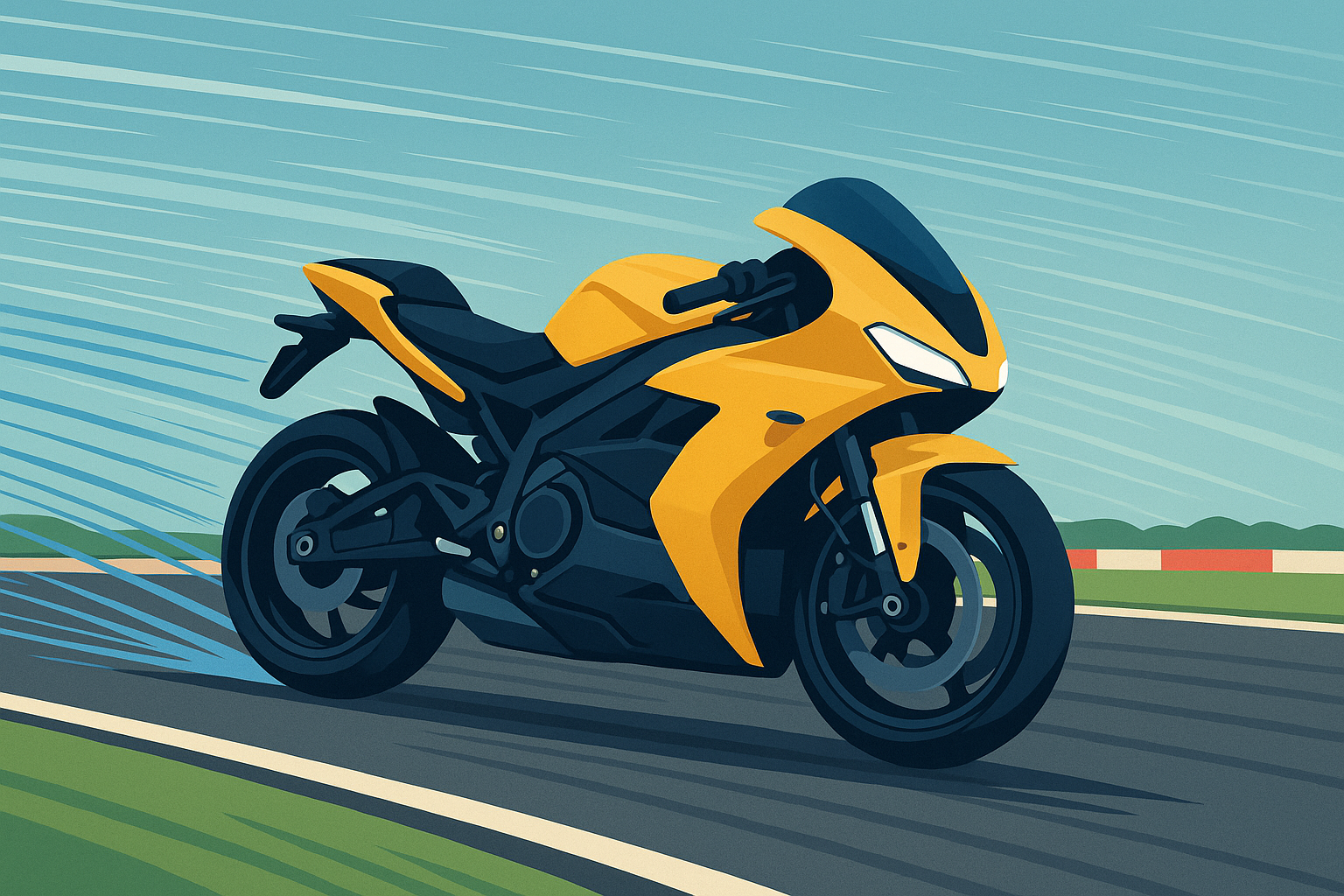
Adventure Trail Machines
Adventure riding needs ground clearance, suspension travel, and durability. The instant torque actually provides incredible traction control advantages in technical terrain – something I discovered after pushing these through some challenging trails.
16. Zero DSR/X (17.3 kWh)
The most capable electric adventure bike with 180 miles city range and 104 mph top speed. $22,995 gets you 19"/17" wheels and long-travel suspension built for mixed terrain.
Ground clearance of 8.5 inches handles serious off-road work. Off-road riding cuts range to 60-80 miles, but that instant torque provides amazing traction control in technical stuff. Zero created something genuinely special here.
17. KTM Freeride E-XC
Pure dirt bike focus at $10,499. You get 1.5 hours of riding time with 50 mph top speed. Lightweight construction with proven KTM chassis excels in technical terrain.
This prioritizes off-road over street performance. KTM's dealer network helps, though electric expertise varies by location. It's a proper dirt bike that happens to be electric.
18. Alta Redshift MXR (Used/Refurbished)
Professional motocross performance from the now-defunct Alta Motors. Used models command $15,000+ with 2-5 hours riding time. The bike delivered 80+ mph capability before production ended.
Finding parts and service requires specialized shops familiar with Alta's systems. Professional-level performance appeals to serious motocross riders despite service challenges. Shame this company didn't survive – they built incredible machines.
19. Cake Kalk AP
Anti-poaching design meets rugged construction. $14,000 includes modular accessories and 50+ mile range. The 56 mph top speed suits trail riding and conservation work.
Swedish engineering emphasizes sustainability and modularity. The unique mission-focused design appeals to environmentally conscious riders. The anti-poaching angle is genuinely interesting.
20. Zero FX (7.2 kWh)
Dual-sport versatility in a lightweight package. $10,995 gets you street/trail capability with 91 miles city range and 85 mph top speed. Balances on-road and off-road performance.
Lighter than the DSR/X makes this more manageable for less experienced riders. Zero's entry point into adventure riding hits the sweet spot for many riders.
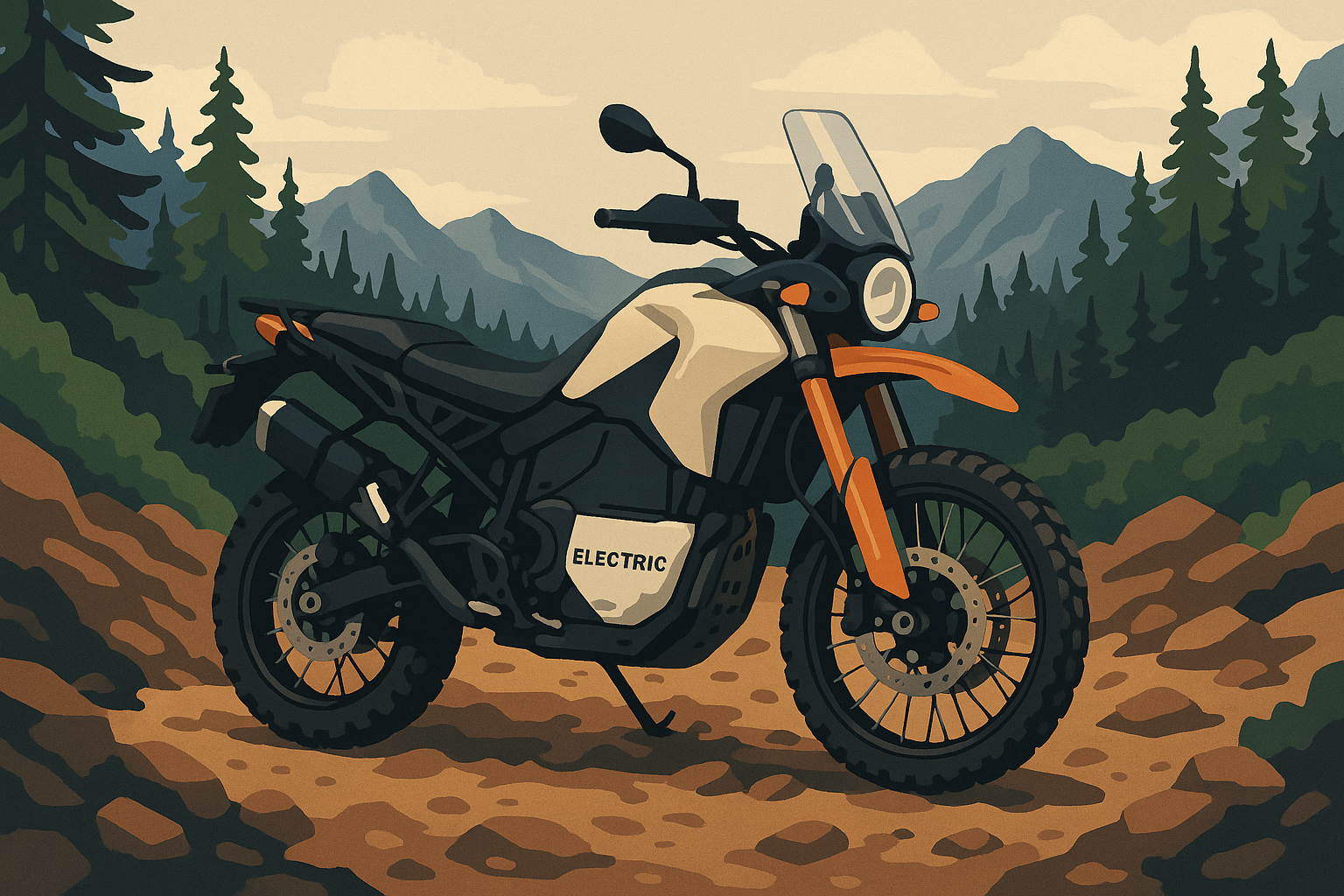
Show-Off Luxury Rides
High-end materials, exclusive features, and limited production. These bikes prioritize craftsmanship and exclusivity over value – for riders who want something truly unique.
21. Tarform Luna
Sustainable materials meet retro-futuristic design. $24,000 includes handcrafted details and 120-mile range. The 95 mph top speed suits premium urban riding.
Environmental responsibility with sustainable construction materials. Limited production and artisanal craftsmanship create exclusivity. The attention to sustainable materials is refreshing.
22. Curtiss Zeus
Radial battery design creates distinctive appearance. $75,000 reflects American craftsmanship and 280-mile range capability. Limited production ensures exclusivity.
The unique battery layout provides exceptional range while creating striking visual impact. Boutique manufacturing justifies premium pricing. The engineering behind that radial design is genuinely innovative.
23. Verge TS
Hubless rear wheel technology defines the unique appearance. $25,000 includes Finnish engineering and 180+ mile range. The 110 mph top speed provides serious performance.
Innovative wheel design creates striking visual impact while delivering practical performance. Finnish engineering emphasizes quality over mass production. Never seen anything like that hubless wheel design.
24. Johammer J1
Integrated battery design creates distinctive silhouette. $25,000 reflects Austrian engineering and 124-mile range. The 75 mph top speed suits premium touring.
Unique styling polarizes opinions while delivering practical performance. Austrian craftsmanship emphasizes quality construction and distinctive design. You definitely won't blend into traffic.
Tight Budget Options
25. CSC City Slicker
Ultra-affordable electric transportation at $2,995. The City Slicker offers 40-mile range with 45 mph top speed. Basic construction keeps costs low while providing essential transportation.
Prioritizes affordability over features or performance. Lightweight construction and simple systems make maintenance straightforward. Sometimes you just need basic electric transportation, and this delivers exactly that.
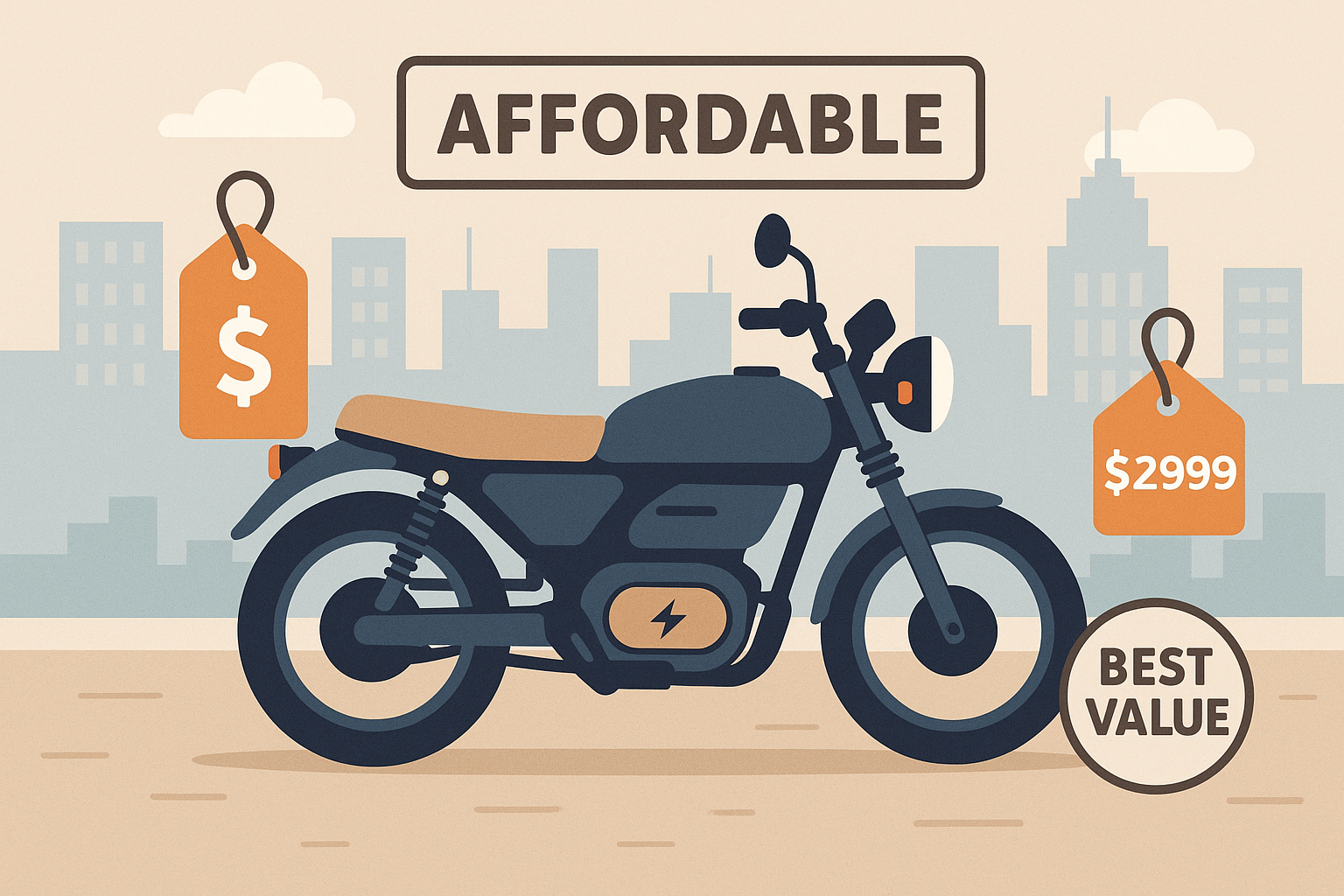
The Good, The Bad, and The 'Why Didn't I Know That?'
Let me break down these 25 bikes across the stuff that actually matters when you're living with one day-to-day. This is the real-world analysis based on actual riding, not just spec sheets.
Range Reality vs Marketing Claims
The Curtiss Zeus leads with insane 280-mile range, followed by the Damon Hypersport at 200+ miles. But these cost supercar money that puts them out of reach for normal humans.
Zero's DSR/X offers the best practical range at 180 miles city for adventure riding, while the SR/S Premium provides 161 miles with touring comfort. Remember though – highway riding cuts these numbers by 40-50%, which you need to factor into trip planning.
Price Range |
Example |
City Range |
Highway Range |
Reality Check |
|---|---|---|---|---|
Budget ($3,000-$7,000) |
CSC City Slicker |
40 miles |
25 miles |
Short urban commutes only |
Mid-Range ($11,000-$22,000) |
Zero SR/S Premium |
161 miles |
82 miles |
Handles most daily needs |
Premium ($25,000-$90,000) |
Curtiss Zeus |
280 miles |
180 miles |
Supercar money for bragging rights |
Budget options like the CSC limit you to 40-mile range – fine for short urban commutes but that's it. Mid-range bikes like the NIU NGT provide 93 miles, handling most daily riding without breaking the bank.
Charging Station Roulette
DC fast charging separates real touring bikes from city prisoners. Energica models use CCS standard, which works with car charging networks – huge advantage. Zero's premium lineup has rapid charging but with proprietary systems that limit your options.
Most bikes rely on Level 1 and Level 2 charging, requiring 4-8 hours for full charges. The BMW CE 04 and NIU NGT offer removable batteries – genius for apartment living.
Charging etiquette is becoming a real thing. Don't be that person who leaves their bike plugged in for 6 hours when you only needed 2. I've seen some heated discussions at charging stations.
Performance Quirks You Need to Know
The Lightning LS-218 holds the land speed record at 218 mph. The Energica Ego+ RS and Arc Vector deliver superbike-level performance that rivals traditional superbikes off the line.
Commuter bikes like the Zero FXS and Sur Ron provide adequate performance for city riding while maintaining efficiency. That instant torque excels in stop-and-go traffic where gas bikes struggle with clutch work and heat.
Adventure bikes balance power and efficiency well. The Zero DSR/X offers 104 mph capability with off-road suspension, while the KTM focuses purely on trail performance.
Build Quality Truth Bombs
BMW, Harley-Davidson, and Energica leverage traditional motorcycle manufacturing experience. These brands offer premium components, established dealer networks, and proven reliability from decades of building motorcycles.
Startup companies like Damon, Arc, and Tarform push technological boundaries but may have limited service networks. Innovation comes with higher risk and potentially limited support when things break.
Value brands like Sur Ron and CSC provide basic transportation at accessible prices. Build quality reflects the pricing – simpler construction that gets the job done without frills.
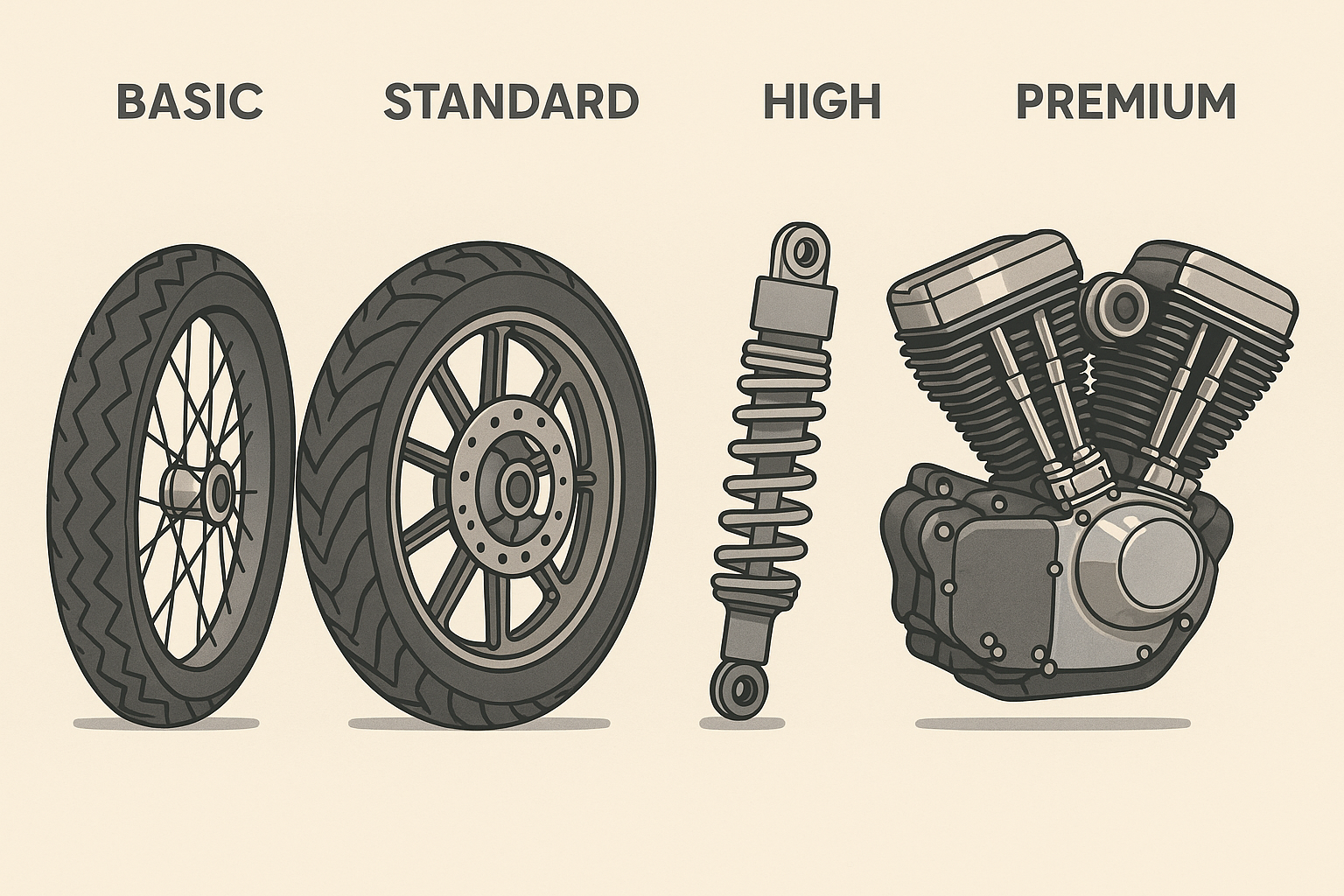
Money Talk: What You'll Really Spend
Premium bikes like the Arc Vector and Lightning LS-218 cost supercar money exceeding $75,000. These target collectors and performance enthusiasts rather than practical transportation seekers.
Zero's lineup provides the best balance of performance, range, and value. Models from $10,995 to $22,995 offer established reliability with dealer support you can actually access.
Entry-level bikes like the CSC City Slicker and Sur Ron make electric motorcycling accessible at $2,995-$4,500. They prioritize affordability over features, but they get you into the electric world.
Cost Category |
5-Year Ownership |
Annual Maintenance |
Energy Cost (yearly) |
Insurance |
|---|---|---|---|---|
Electric |
$18,000-$95,000 |
$200-$500 |
$150-$400 |
$800-$2,500 |
Gas |
$15,000-$40,000 |
$800-$1,500 |
$800-$1,800 |
$600-$2,000 |
Difference |
+$3,000-$55,000 |
-$600-$1,000 |
-$650-$1,400 |
+$200-$500 |
Service Support Reality Check
Dealer networks vary dramatically. Zero maintains the most comprehensive network in North America. Their established presence provides reliable support and parts availability you can count on.
Harley-Davidson and BMW leverage existing dealer infrastructure, though electric expertise varies by location. Traditional manufacturer support with electric training, but not every dealer is equally prepared.
Startup manufacturers often provide direct customer support but lack local service options. This creates challenges for routine maintenance outside major metropolitan areas where you might be hours from qualified help.
Protecting Your Phone (Because You'll Need It More Than You Think)
Your smartphone becomes mission-critical for electric motorcycle riding. You'll constantly check battery levels, hunt for charging stations, monitor range, and navigate efficiently. This device needs protection that matches your bike's performance.
Electric motorcycles create unique mounting challenges. That instant torque can stress phone mounts beyond their limits. Traditional holders fail when you need them most – during aggressive acceleration where your phone becomes a projectile.
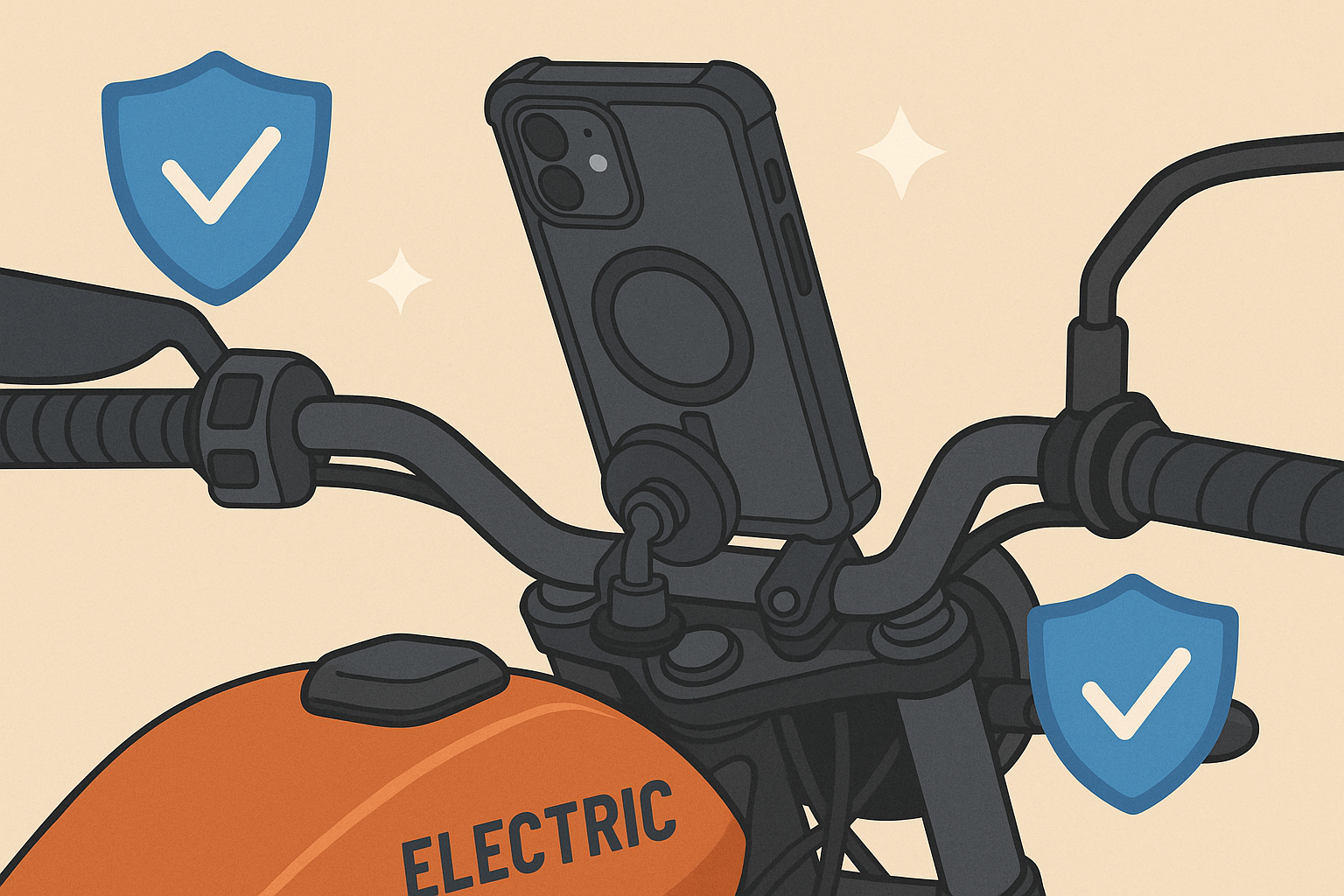
Oh, and get a decent phone mount – trust me on this. I launched my phone into a bush during my first aggressive takeoff. Rokform makes solid ones that actually stay put when you twist the throttle. Their military-grade protection exceeds drop test standards, safeguarding expensive smartphones during electric motorcycle adventures.
The patented RokLock™ system provides four layers of security: twist lock, magnet, safety lanyard, and protective case. The magnetic mounting allows quick phone removal for charging station authentication – something you'll need constantly for DC fast charging.
Multiple mounting options (handlebar, stem, mirror, and perch mounts) accommodate different riding positions and bike configurations. Weather resistance protects your device from rain, dust, and temperature extremes while maintaining full touchscreen functionality.
For comprehensive protection during electric motorcycle adventures, explore Rokform's complete motorcycle mounting solutions designed specifically for the unique demands of electric motorcycle riding.
Ready to protect your smartphone investment? Explore Rokform's complete motorcycle mounting solutions designed specifically for the unique demands of electric motorcycle riding.
Bottom Line
Look, electric motorcycles aren't for everyone yet. If you live in an apartment with no charging, do long highway trips regularly, or just love the sound of a V-twin, maybe wait a few more years. The infrastructure is still catching up, and the upfront costs are real.
But if you're curious and have the budget? They're pretty damn cool. Just go in with realistic expectations and you'll probably love it.
From the $2,995 CSC City Slicker to the $90,000 Arc Vector, there's an electric bike for different needs and budgets. Range capabilities now exceed 100 miles for quality bikes, and DC fast charging is making longer trips increasingly practical.
If it were my money, I'd probably go with something from Zero's lineup. Yeah, they're pricey, but Zero's been doing this longer than most, and finding someone to work on it won't be a nightmare. For beginners, that Sur Ron Light Bee X is hard to beat at $4,500 – it's not fancy, but it'll teach you if electric is right for you.
The total cost of ownership actually favors electric despite higher upfront costs. I save about $1,500 annually on maintenance and fuel, and with federal tax credits, the math works out over time. Just factor in that eventual battery replacement cost.
Your smartphone becomes essential for electric riding – protecting it with proper mounting solutions ensures you can monitor battery levels, find charging stations, and navigate efficiently throughout your electric motorcycle adventures.









